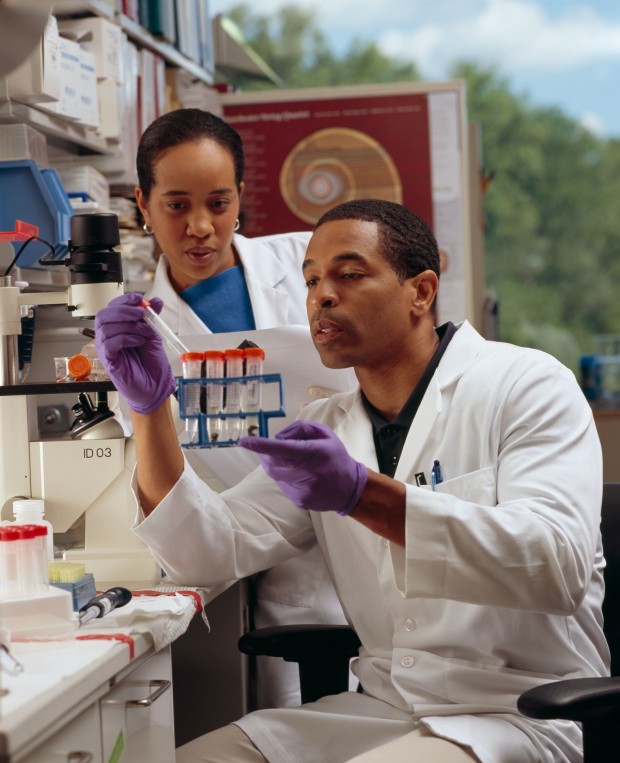Key Benefits of Polyclonal Antibodies
- (Photo : National Cancer Institute on Unsplas)
All animals possess a basic system of defense against pathogens to which they tend to be susceptible, such as bacteria, viruses, parasites, and other microbes. When an infectious pathogen enters an animal's body, innate immunity mounts a non-specific response directed against any pathogens to neutralize them. Vertebrates have an additional, highly complex line of defense known as adaptive immunity that becomes activated if the innate immunity fails to clear the pathogens. It consists of many types of cells and molecules that recognize specific substances and eliminate them in a coordinated immune system response. Through immunologic memory, this adaptive immunity learns and remembers antigens after first encountering them, allowing the system to create a stronger, faster, and more effective defense in the event of future exposure.
Antibodies in the Animal Immune System Response
The main active components of the adaptive immune system are lymphocytes and antibodies. Lymphocytes, a class of white blood cells arising in the bone marrow, synthesize cell surface receptors or secrete proteins (antibodies) that bind to the pathogens. Antibodies are Y-shaped molecules consisting of two heavy polypeptide chains and two light chains. The two tips contain paratopes specific for one specific epitope (binding site) on an antigen, and this binding marks the antigen for clearance and/or destruction. The antigen-antibody interaction forms the foundation of the immune response and allows antibodies to serve as critical reagents in a broad range of applications for life science and medical researchers. They may be categorized into two main types depending on how they are produced - polyclonal and monoclonal antibodies.
What Are Polyclonal Antibodies?
Polyclonal antibodies are a heterogeneous mixture of antibodies produced by different B-cell clones that can recognize and bind to several different epitopes on an antigen. They are generated by injecting an immunogen into a host animal to elicit an immune response, giving subsequent infections until the animal produces a sufficient titer of antibodies, collecting its blood, and removing the clotting proteins and red blood cells to create a serum. The ability of polyclonal antibodies to bind to multiple epitopes makes them incredibly sensitive tools for detecting and binding to target antigens in many immunoassays and across a wide range of test conditions.
Benefits of Polyclonal Antibodies
■ Easy, short, and cost-effective production process (approximately three months)
■ Do not require the specialized facilities or equipment needed for monoclonal production
■ Can be generated in numerous host animal species for maximum immune response
■ High antibody affinity against an antigen due to recognizing multiple epitopes
■ Greater flexibility in antigen recognition
■ Higher sensitivity against targets
■ Ability to detect low-quality proteins or proteins with low levels of expression
■ Quicker binding to target antigens due to high affinity (ideal for assays requiring quick capture such as IP or ChIP)
■ Provide more robust signals through amplification
■ Easy to label without impacting binding capability
■ Easy to store and dilute due to biophysical diversity
■ High stability and tolerance for environmental changes (such as pH, temp, and buffer)
■ Less sensitive to changes in antigen that could impact binding (denaturation, polymorphism, heterogeneity of glycosylation)
■ Well suited for detecting native proteins
■ Optimizing certain parameters (antigen quantity, antigen: adjuvant ratios, frequency, and number of injections, etc.) can further enhance affinity and increase yields
Polyclonal antibodies may be used alone or in combination with monoclonal antibodies in different assay formats. In indirect ELISA test kits, researchers use a pair of antibodies, a primary (capture) antibody specific to the target antigen and a secondary (detection) antibody that is raised against the primary antibody and labeled with an enzyme reporter. The primary antibody binds to the antigen; then, the secondary antibody binds to the primary antibody. This interaction prompts the enzyme to generate a chromogenic signal proportionate to the concentration of the antigen in the sample. Due to their higher sensitivity ranges, tolerance to structural variations of primary antibodies, and effective capturing of antigens, polyclonal antibodies are typically used as secondary antibodies to amplify the generated signal and enable more effective detection.

















